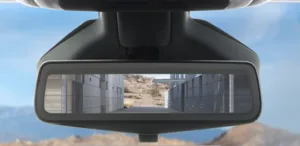There were many, many drones at all imaginable size and price levels being shown in South Hall, and one of them qualifies as an electric vehicle (Photo 6 above). The eHang 184 is a large drone that can carry one person. It qualifies as a drone because the passenger does not pilot the vehicle. He simply punches in the destination and the eHang does the rest.
The rapid growth in the battery-powered vehicle market has stimulated several large investments in battery manufacturing, including Panasonic’s in the Nevada-based Tesla-Panasonic battery factory. The plummeting price of crude oil may be creating some angst in the BEV world, but it doesn’t seem to be dampening development. In part, that is due to the U.S. corporate average fuel economy (CAFE) requirements, which become more stringent regardless of the price of crude. Also, we seem to be on the verge of some new battery chemistries that may improve energy density by 50% over that of Li-ion, and there is optimism that the cost of Li-ion batteries themselves will be falling as volume increases.
Batteries weren’t the only alternative energy source on display in the Las Vegas Convention Center’s North Hall, in which most of CES’s automotive-technology exhibitors were concentrated. Toyota followed up its introduction of the hydrogen-fuel-cell Mirai last year with two hydrogen-fueled design studies. First was the light-hearted FCV Plus, which looks like it was designed to be driven on Florida’s sun-drenched Captiva Island, but which Toyota identified as a car for the world’s coming hydrogen economy (Photo 7 – right). (It is not at all clear that we will have a hydrogen economy, but let’s not worry about details.) The second design study was a single-passenger pod with large wheels on each side like an old Mississippi River sidewheeler, a third large wheel in the front, and a small wheel in the rear, presumable to keep the pod from dragging its tail (Photo 8 – below). No information was supplied, not even a name, and I have not found even a mention of it in Toyota’s press materials. But it was there. Honest. (I assume the pod was an FCV because of its proximity to the FCV Plus, but Toyota was not confirming that.)
Other than the Chevy Bolt and other non-petrol/non-diesel vehicles, the big automotive story was the rapid evolution of driver assistance, connected vehicles, and autonomous vehicles. As the family car begins to resemble a cell phone on wheels, it inherits a new set of issues along with its new capabilities. (See accompanying article on the Consumer Telematics Conference.) If some of this technology seems appealing but you’re not ready to trade in your grandfather’s Oldsmobile, you can still add a surprising amount of intelligence with aftermarket devices.

